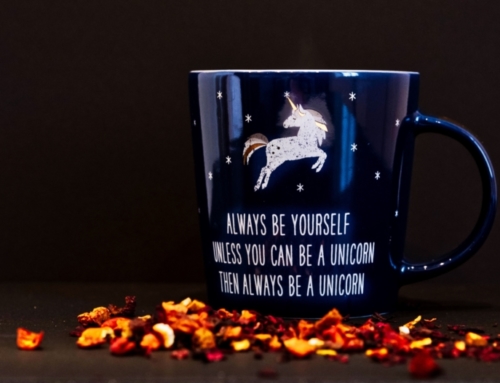In this post I’m going to show you how The Seven Dwarfs relate to Bullying and Harassment in the Workplace.
Have I piqued your interest? Well, let’s start with an anecdote first…
I was chatting with a friend the other day (we’ll call her Ellen) who manages a team of employees working at a high-end retail store.
Ellen has been with this international brand-name retailer a dozen or so years and after sitting with her for four seconds, it’s instantly noticeable that she loves her job and the company.
Ellen was asking me for assistance in brainstorming ideas to increase her team’s ability to meet and greet potential customers when they enter the boutique.
What had prompted her conversation with me is that she had recently begun to notice that some members of her team (who are partially compensated by commission) are so engrossed in conversations with their own customers, that others were often left to wander the store looking for assistance, or at the very least, someone to acknowledge that they were actually there.
Ellen was concerned that the culture of the workplace was slipping into a “survival of the fittest” (or perhaps fastest, in this case) mentality and that perhaps it was only a matter of time before this attitude would start to damage the relationships between team members themselves. We know that damaged team relationships in the workplace create the potential for bullying or harassment.
Ellen is not the type of person to find pleasure in continually harping on her team about the nuances of the workplace, and therefore she was looking for another remedy, hence our conversation.
One of the ideas I discussed with Ellen was something that I had learned from the hospitality industry.
It’s an idea that has been continually applied to retail situations when dealing with customers, and I immediately thought that it could be expanded to include how her team interacted with each other as well.
The 10/5 Rule, also known as the Zone of Hospitality Rule, is a guiding principle for extending courtesy to customers in the hospitality, healthcare, and other service industries.
The rule states that when staff members are within ten feet of a guest, the staff member must greet the guest by making eye contact and smiling.
When a staff member is within five feet of a guest, the staff member must also look the guest in the eye and acknowledge him/her with a verbal greeting, something as simple as, “Good morning.”
Many companies have adapted versions of the 10/5 Rule to improve friendliness, customer-service, and responsiveness.
Walmart’s iconic founder Sam Walton instituted the Ten-Foot Attitude and said, “… I want you to promise that whenever you come within 10 feet of a customer, you will look him in the eye, greet him, and ask him if you can help him.”
As Walmart grew, Sam added greeters to greet customers at the door (and control shrinkage from loss of product). Even today, the Ten-Foot Attitude is still a part of the Walmart culture.
At Disney theme parks, cast members are encouraged to make eye contact, smile, greet, and welcome each guest as part of Disney’s famous Seven Service Guidelines.
The Seven Service Guidelines of Disney
- Be Happy…make eye contact and smile!
- Be like Sneezy…greet and welcome each and every guest. Spread the spirit of Hospitality…It’s contagious!
- Don’t be Bashful…seek out Guest contact.
- Be like Doc…provide immediate service recovery.
- Don’t be Grumpy…always display appropriate body language at all times.
- Be like Sleepy…create DREAMS and preserve the “MAGICAL” Guest experience.
- Don’t be Dopey…thank each and every Guest!
It sounds so simple doesn’t it?
Ellen loved the idea. She told me that there was a variation of this concept within her company’s Customer Service code, but she was encouraged by the simplicity of the 10/5 Rule. She is a lifelong Disney fan and loved the tie-in to familiar characters that illustrate the concept so well. Ellen told me that she was going to bring it up to her team at the next staff briefing to see what they thought.
But I wanted to suggest that she take things a step further.
Why couldn’t she use these straightforward, uncomplicated, effortless, and easily remembered ideas to help with day to day dealings between each other?
Why not incorporate them into a new culture code for within her team?
In a recent Bullying and Harassment prevention workshop, I discovered that several participants were new to the organization. I wanted to know how welcomed they felt since an important element in creating a respectful environment focuses on people treating each other well.
The answers offered up in the room ranged from being welcomed in with open arms (literally!) and shaking hands with seven new colleagues before reaching his new work area, to the exact opposite – an employee describing a scene that could have come right out of the movie Ice Station Zebra (that’s how old I am!).
So why such extremes when it comes to how new team members are welcomed within the same organization?
Well, think of the book written by Dale Carnegie way back in 1936, How to Win Friends & Influence People. He spoke about the six basic tenants of why courtesy is so influential in building relationships.
Dale Carengie’s Six Rules To Make People Like You
- Become genuinely interested in other people
- Smile
- Remember that a person’s first name is, to that person, the sweetest and most important sound in any language
- Be a good listener
- Talk in terms of the other person’s interest
- Make the other person feel important – and doing it sincerely
None of these costs anything to perform and yet these simple acts are priceless in the relational world.
Likeable people not only succeed in their personal relationships, but also tend to be more successful at the workplace.
In my mind, all of this trickles down to developing a healthy workplace culture— which is something that is demonstrated at every level, but most critically by the boss who sets the standard for others.
And courtesy goes a long way in helping to prevent bullying and harassment.
It’s not difficult, but it does have to be something that isn’t just demonstrated, but is also talked about…regularly.
So here was my wrap up suggestion for Ellen to share with her team at work: Be courteous and demonstrate it. Simple acts of courtesy (making eye contact, smiling more, acknowledging each other, listening, showing sincere interest in colleagues, for example) work because human beings are much more likely to do things for—and accede requests from—other human beings that they perceive as likeable.
And when you’re ever in doubt or forget how to behave, just think of The Seven Dwarfs…







Leave A Comment